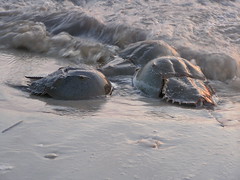 Image by U. S. Fish and Wildlife Service - Northeast Region via Flickr
Image by U. S. Fish and Wildlife Service - Northeast Region via Flickr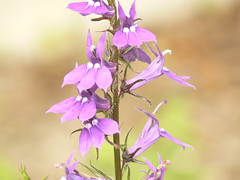 Image by U. S. Fish and Wildlife Service - Northeast Region via Flickr
Image by U. S. Fish and Wildlife Service - Northeast Region via Flickr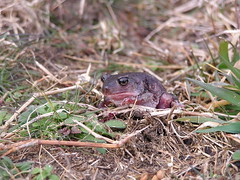 Image by U. S. Fish and Wildlife Service - Northeast Region via Flickr
Image by U. S. Fish and Wildlife Service - Northeast Region via Flickr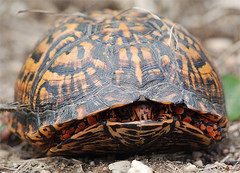 Image by Billtacular via Flickr
Image by Billtacular via Flickr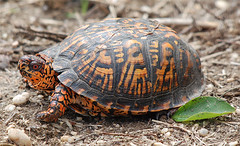 Image by Billtacular via FlickrEstablished
as part of the the National Wildlife Refuge System in 1989. The refuge
has 11,500 acres and continues to grow. Cape May has a key location on
the Atlantic Flyway. Some of the birds which find the refuge important
are the American black duck, American kestrels, bald eagles, barred
owls, blue winged warblers, bobolinks, Cooper's hawks, great blue
herons, least tern, little blue herons, northern harriers, ospreys,
ovenbirds, peregrine falcons, piping plover, red-headed woodpeckers, red knot, red-shouldered hawks, red tailed hawks, ruddy turnstone, semipalmated sandpiper, sanderling, sharp-shinned hawks, short-eared owls, woodcocks and yellow-crowned night-herons.
Reptiles and amphibians include the diamondback terrapin, Eastern tiger
salamander and the Southern gray treefrog. Swamp pink, a member of the
lily family, is on the Federal list of Endangered species, and this is
one of the few places it can be found. There are four hiking trails in
the refuge.
Image by Billtacular via FlickrEstablished
as part of the the National Wildlife Refuge System in 1989. The refuge
has 11,500 acres and continues to grow. Cape May has a key location on
the Atlantic Flyway. Some of the birds which find the refuge important
are the American black duck, American kestrels, bald eagles, barred
owls, blue winged warblers, bobolinks, Cooper's hawks, great blue
herons, least tern, little blue herons, northern harriers, ospreys,
ovenbirds, peregrine falcons, piping plover, red-headed woodpeckers, red knot, red-shouldered hawks, red tailed hawks, ruddy turnstone, semipalmated sandpiper, sanderling, sharp-shinned hawks, short-eared owls, woodcocks and yellow-crowned night-herons.
Reptiles and amphibians include the diamondback terrapin, Eastern tiger
salamander and the Southern gray treefrog. Swamp pink, a member of the
lily family, is on the Federal list of Endangered species, and this is
one of the few places it can be found. There are four hiking trails in
the refuge.
 Image by U. S. Fish and Wildlife Service - Northeast Region via Flickr
Image by U. S. Fish and Wildlife Service - Northeast Region via Flickr Image by U. S. Fish and Wildlife Service - Northeast Region via Flickr
Image by U. S. Fish and Wildlife Service - Northeast Region via Flickr Image by U. S. Fish and Wildlife Service - Northeast Region via Flickr
Image by U. S. Fish and Wildlife Service - Northeast Region via Flickr Image by Billtacular via Flickr
Image by Billtacular via Flickr Image by Billtacular via FlickrEstablished
as part of the the National Wildlife Refuge System in 1989. The refuge
has 11,500 acres and continues to grow. Cape May has a key location on
the Atlantic Flyway. Some of the birds which find the refuge important
are the American black duck, American kestrels, bald eagles, barred
owls, blue winged warblers, bobolinks, Cooper's hawks, great blue
herons, least tern, little blue herons, northern harriers, ospreys,
ovenbirds, peregrine falcons, piping plover, red-headed woodpeckers, red knot, red-shouldered hawks, red tailed hawks, ruddy turnstone, semipalmated sandpiper, sanderling, sharp-shinned hawks, short-eared owls, woodcocks and yellow-crowned night-herons.
Reptiles and amphibians include the diamondback terrapin, Eastern tiger
salamander and the Southern gray treefrog. Swamp pink, a member of the
lily family, is on the Federal list of Endangered species, and this is
one of the few places it can be found. There are four hiking trails in
the refuge.
Image by Billtacular via FlickrEstablished
as part of the the National Wildlife Refuge System in 1989. The refuge
has 11,500 acres and continues to grow. Cape May has a key location on
the Atlantic Flyway. Some of the birds which find the refuge important
are the American black duck, American kestrels, bald eagles, barred
owls, blue winged warblers, bobolinks, Cooper's hawks, great blue
herons, least tern, little blue herons, northern harriers, ospreys,
ovenbirds, peregrine falcons, piping plover, red-headed woodpeckers, red knot, red-shouldered hawks, red tailed hawks, ruddy turnstone, semipalmated sandpiper, sanderling, sharp-shinned hawks, short-eared owls, woodcocks and yellow-crowned night-herons.
Reptiles and amphibians include the diamondback terrapin, Eastern tiger
salamander and the Southern gray treefrog. Swamp pink, a member of the
lily family, is on the Federal list of Endangered species, and this is
one of the few places it can be found. There are four hiking trails in
the refuge. 

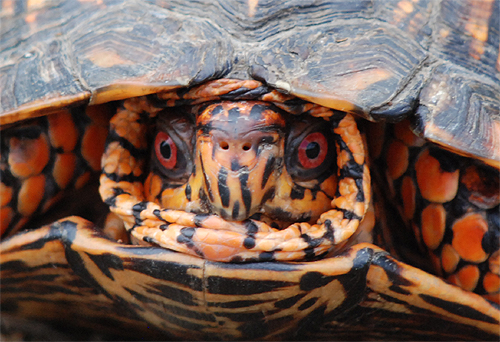
No comments:
Post a Comment